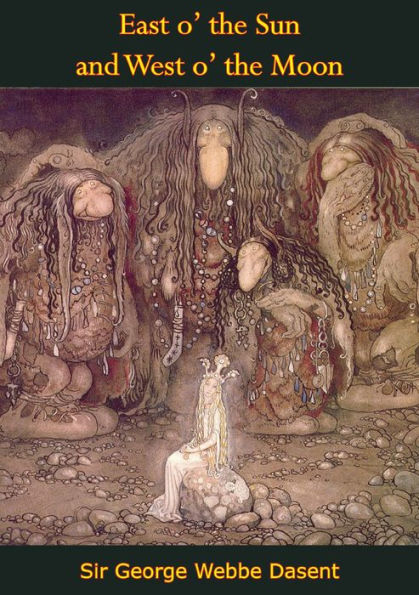Sir George Webbe Dasent (May 22, 1817 - June 11, 1896) was a translator of folk tales and contributor to The Times.
Born in 1817 at St. Vincent, West Indies, the son of the attorney general, John Roche Dasent, he was educated at Westminster School, King's College London, and Oxford University. On leaving the university in 1840 he was appointed to a diplomatic post in Stockholm, Sweden. There he met Jakob Grimm, at whose recommendation he first became interested in Scandinavian literature and mythology.
In 1842 he published the first result of his studies, an English translation of The Prose or Younger Edda. In the following year he translated Rask's Grammar of the Icelandic or Old-Norse Tongue, taken from the Danish.
Returning to England in 1845 he became assistant editor of The Times. He also continued his Scandinavian studies, publishing translations of various Norse stories. He also read for the Bar and was called in 1852. In 1853, he was appointed professor of English literature and modern history at King's College London and in 1859 he translated Popular Tales from the Norse (Norske Folkeeventyr) by Peter Christen Asbjørnsen and Jørgen Moe, including in it an "Introductory Essay on the Origin and Diffusion of Popular Tales."
Perhaps his most well-known work, The Story of Burnt Njal, a translation of the Icelandic Njal's Saga that he had first attempted while in Stockholm, was issued in 1861. This was followed in 1861-1862 with a visit to Iceland, where he was hailed in Reykjavík as one of the saga lovers who had strengthened ties between the English and Norse. Subsequent to that visit, he published in 1866 his translation of Gisli the Outlaw from the Icelandic.
In 1870, he was appointed a civil service commissioner and consequently resigned his post at The Times. In 1876 he was knighted in England, though he was already a Danish knight. Dasent retired from public service in 1892 and died at Ascot in 1896 at the age of 79.
Born in 1817 at St. Vincent, West Indies, the son of the attorney general, John Roche Dasent, he was educated at Westminster School, King’s College London, and Oxford University. On leaving the university in 1840 he was appointed to a diplomatic post in Stockholm, Sweden. There he met Jakob Grimm, at whose recommendation he first became interested in Scandinavian literature and mythology.
In 1842 he published the first result of his studies, an English translation of The Prose or Younger Edda. In the following year he translated Rask’s Grammar of the Icelandic or Old-Norse Tongue, taken from the Danish.
Returning to England in 1845 he became assistant editor of The Times. He also continued his Scandinavian studies, publishing translations of various Norse stories. He also read for the Bar and was called in 1852. In 1853, he was appointed professor of English literature and modern history at King’s College London and in 1859 he translated Popular Tales from the Norse (Norske Folkeeventyr) by Peter Christen Asbjørnsen and Jørgen Moe, including in it an “Introductory Essay on the Origin and Diffusion of Popular Tales.”
Perhaps his most well-known work, The Story of Burnt Njal, a translation of the Icelandic Njal’s Saga that he had first attempted while in Stockholm, was issued in 1861. This was followed in 1861-1862 with a visit to Iceland, where he was hailed in Reykjavík as one of the saga lovers who had strengthened ties between the English and Norse. Subsequent to that visit, he published in 1866 his translation of Gisli the Outlaw from the Icelandic.
In 1870, he was appointed a civil service commissioner and consequently resigned his post at The Times. In 1876 he was knighted in England, though he was already a Danish knight. Dasent retired from public service in 1892 and died at Ascot in 1896 at the age of 79.



